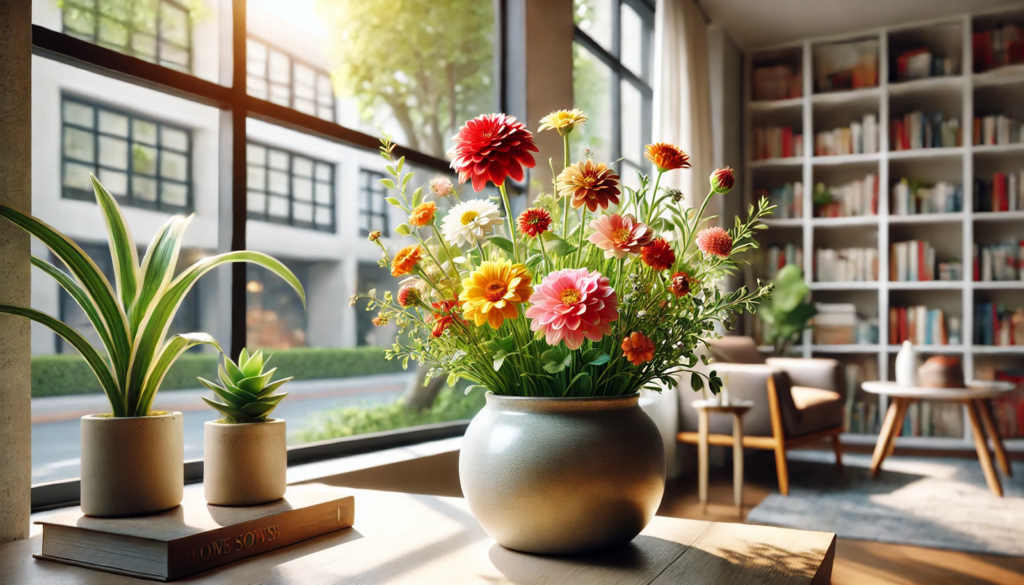Roses are iconic in every sense—known for their elegance, vibrant colors, and unforgettable fragrance. While they’re often seen as delicate or difficult, with the right approach, you can cultivate healthy, thriving rose bushes that bloom abundantly season after season. Whether you’re a beginner or an experienced gardener, this guide will walk you through growing roses like a pro.
1. Choosing the Right Type of Rose
There are many types of roses, and choosing the right one for your garden is the first step to success.
Most Popular Types:
- Hybrid Tea Roses: Large, high-centered blooms, great for cutting.
- Floribunda Roses: Smaller flowers in clusters, continuous bloomers.
- Climbing Roses: Ideal for trellises and fences.
- Shrub Roses: Hardy, low-maintenance, with a bushy habit.
- Miniature Roses: Compact and perfect for containers.
Tip: Choose disease-resistant varieties if you’re new to rose gardening.
2. Where and When to Plant Roses
Sunlight:
Roses need 6 to 8 hours of direct sunlight daily to bloom to their full potential.
Soil:
They thrive in well-draining, loamy soil rich in organic matter. Ideal pH: 6.0 to 6.5.
When to Plant:
- Spring: After the last frost
- Fall: At least 6 weeks before the first frost
Tip: In cold regions, spring planting is better. In mild climates, fall gives roots time to establish.
3. How to Plant Roses (Step-by-Step)
Materials Needed:
- Compost or aged manure
- Organic mulch
- Shovel
- Watering can or hose
- Rose-specific fertilizer
Planting Instructions:
- Dig a hole twice as wide as the root ball and about 18 inches deep.
- Mix compost into the removed soil.
- Create a mound at the bottom of the hole for bare-root roses.
- Place the rose over the mound, spreading roots gently.
- Backfill the hole halfway, water well, then fill the rest.
- Water thoroughly and apply mulch around the base.
Tip: The graft union (swollen part near base) should be just below soil level in colder zones.
4. Watering and Feeding Roses
Watering:
- Deep water 1–2 times per week.
- Avoid wetting the leaves (prevents black spot and mildew).
- Use drip irrigation or soaker hoses for best results.
Fertilizing:
- Use a balanced rose fertilizer (10-10-10 or 5-10-5).
- Feed in early spring, after first bloom, and midsummer.
- Stop fertilizing 6 weeks before first frost to allow plants to go dormant.
Natural Alternatives: Compost tea, fish emulsion, banana peels, crushed eggshells.
5. Pruning Roses for Health and Blooms
Proper pruning encourages vigorous growth and more flowers.
When to Prune:
- Spring: Right as new growth begins.
- Remove any dead or damaged wood.
- Cut just above outward-facing buds.
- Use sharp, sterilized pruners.
Summer:
- Deadhead spent blooms weekly.
- Cut back to the first leaf with five leaflets.
Fall:
- Lightly prune to shape and remove weak stems.
6. Mulching and Weed Control
Mulching keeps the soil moist, suppresses weeds, and regulates temperature.
- Use 2–3 inches of organic mulch (bark, straw, compost).
- Keep mulch 2 inches away from the base of the rose.
- Refresh mulch layer once or twice a year.
7. Common Rose Problems and Solutions
| Problem | Symptoms | Solution |
| Black Spot | Black patches on leaves | Remove infected leaves, use neem oil |
| Powdery Mildew | White coating on leaves | Improve air circulation, water at base |
| Aphids | Clusters on new growth | Spray with water or neem oil |
| Japanese Beetles | Skeletonized leaves | Hand-pick early in the morning |
| Yellowing Leaves | Overwatering or poor drainage | Check soil moisture and aeration |
Tip: Choose disease-resistant varieties like ‘Knock Out’ or ‘Carefree Beauty’ for fewer issues.
8. Supporting and Training Roses
- Climbing Roses: Use trellises, fences, or arches. Tie stems gently with garden twine.
- Tall Bush Roses: Use stakes to prevent bending during wind or heavy bloom.
Training Tips:
- Train stems horizontally to encourage more blooms along the cane.
- Prune side shoots to shape the plant as needed.
9. Growing Roses in Containers
No yard? No problem. Many roses grow beautifully in pots.
Container Requirements:
- Minimum 15–20 inches wide
- Use high-quality potting mix
- Ensure good drainage
- Water more frequently (containers dry faster)
- Fertilize monthly during growing season
10. Enjoying the Results
Roses reward your effort with breathtaking blooms and fragrance. Use them as:
- Cut flowers for arrangements
- Edging plants in formal gardens
- Focal points in landscape designs
- Living fences for privacy and color
Final Thoughts: Mastering Rose Gardening
Growing roses like a pro is about mastering consistency, care, and a bit of patience. Choose the right varieties, feed them well, prune with purpose, and you’ll have a garden that turns heads—and scents the air—with gorgeous, lasting blooms.






